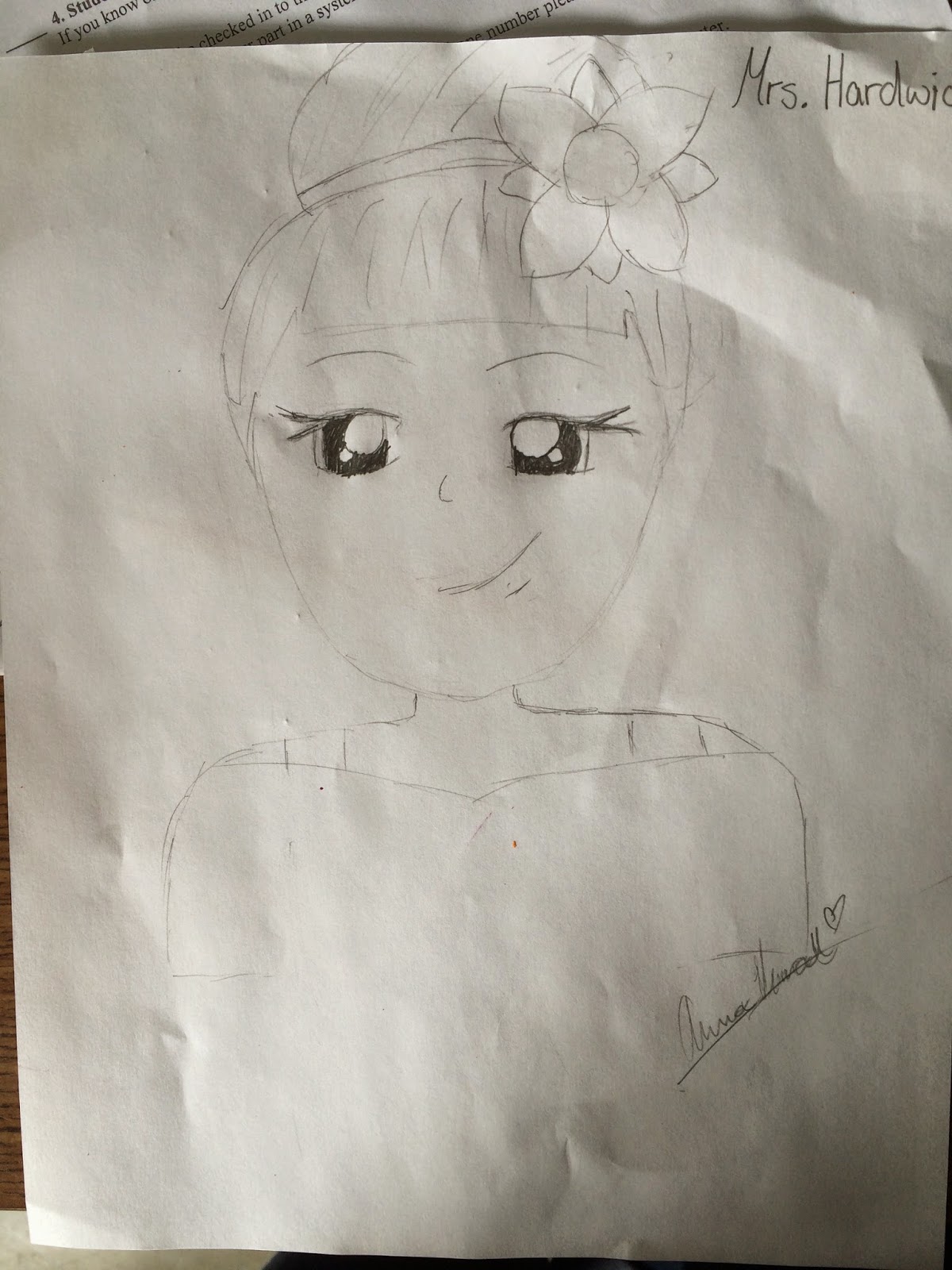This is a project that takes a while, but if students will put the effort in always looks cool at the end!
First, we talk about drawing what we see, not what we think. We practice first with two drawings. One drawing I demonstrate with them, the second I have them do without my help. Students then pick out their own animal picture and apply what they've learned to drawing an animal. There are a lot of choices so they can pick something simple or complex! But they need to draw it the way it looks in the photo - drawing what they see!
This student did not get to add color to his (due to time contraints), but I thought it was a good example of the process. Photograph, draft, and final drawing!!
After students draw their animal, they split the entire drawing up into 6 or more sections. Each section will be filled in with a solid color of paint. After it's dry, students will begin adding patterns to each section. Below are the examples that were chosen to hang in the hallway.





















































